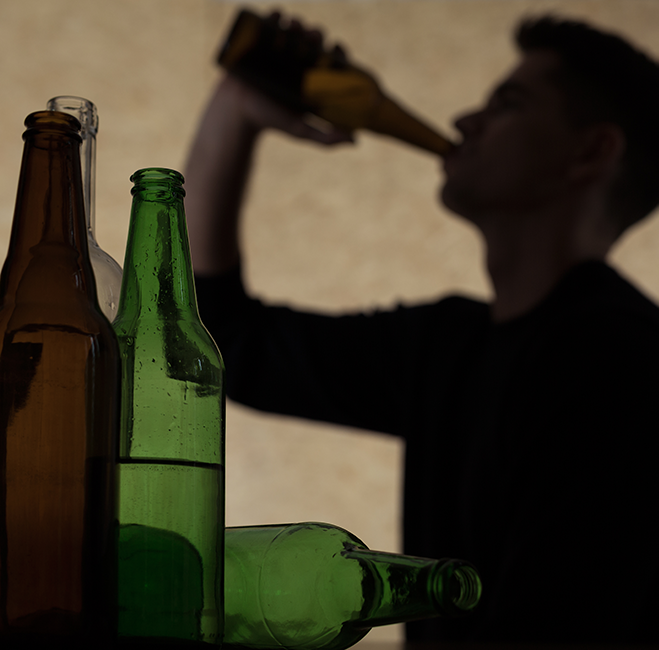To answer this question, you must first answer the question, “How long does alcohol remain in the body?” A widely held impression is that alcohol stays in the system for a long time. However, alcohol is eliminated very quickly from the body. In fact, it eliminates at a constant rate of about .015% BAC per hour, which is about one drink an hour for the average man. If an average sized man consumed one drink, the maximum BAC on a breathalyzer test would be .020%. Furthermore, a little over an hour after reaching the .020% BAC level the body would have metabolized the alcohol, resulting in an alcohol level of zero. These examples are for a man of about 150 lbs. Gender and weight are important variables that affect BAC levels. Women have higher BAC levels than men because of the ratio of body fat to muscle, and larger people will have lower BAC levels than smaller people. See our online Drink Wheel to explore how gender and weight influence BAC levels.
A woman weighing 105 lbs. who consumes 13 drinks can generate a BAC level of about .39% BAC. It would take 26 hours for their BAC level to reach zero after they stopped drinking. Any breathalyzer test during this period would detect alcohol in the body and register a BAC level. Any test after 26 hours would produce a result of 0% BAC. This is an extreme scenario as .39% BAC is a dangerously high BAC level that can be lethal to most people. But it does illustrate that extremely high levels of alcohol can remain and be detectable for over 24 hours. For moderate BAC levels of .04% – .10% BAC, alcohol is eliminated in a matter of hours and will not be detected after 24 hours.
Other Detection Methods
Breathalyzers are not the only alcohol detection method available. Saliva alcohol tests are widely used and give accurate results because the proportion of alcohol in saliva is directly related to the proportion of alcohol in blood. Some saliva tests give semi-quantitative results and can estimate BAC levels. Other saliva tests render a pass/fail result at a specific cutoff level.
Crush and blow disposable breath tests are chemical tests that detect alcohol in the breath and providing pass/fail results at varying BAC levels. All these devices can detect the presence of alcohol in the body in the scenario described earlier.
Other Important Questions
Breathalyzers and some saliva tests are widely used to determine a person’s current BAC level, answering questions, “how much have you been drinking, and do you currently have alcohol in your system?”. However, the question, “are you drinking at all in the last several days?” must be addressed using a different testing method. Court-ordered probation or substance abuse programs look to EtG alcohol metabolite testing to answer the question of alcohol abstinence. That’s because EtG alcohol metabolite tests can detect alcohol in a person’s urine as early as two hours after alcohol consumption and up to 80 hours after alcohol consumption. EtG stands for Ethyl Glucuronide, a direct metabolite of ethyl alcohol and a distinct marker for alcohol consumption. EtG tests are available as laboratory tests and as instant tests.
In order for a program to choose the appropriate alcohol test device, they must first establish the objectives of their testing program and consider any applicable legal regulations or requirements. Once these questions have been answered the program can identify the appropriate alcohol testing device that will best meet their program’s needs.

